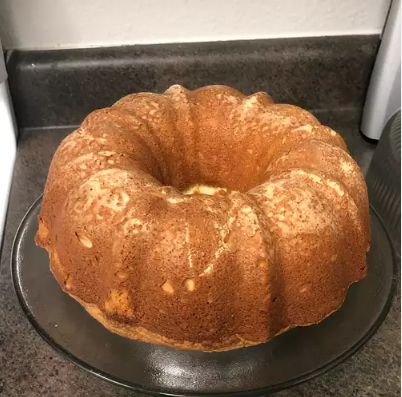History and Evolution of Pound Cake
Historical Background
- Origins in Europe: The pound cake originates from Europe, named for its simple recipe using one pound each of flour, butter, eggs, and sugar. This formula made the cake memorable and popular in 18th-century kitchens.
- Significance of Ingredients: The balanced ratio of ingredients in the pound cake not only simplified baking but also ensured a rich texture, demonstrating early culinary precision.
Evolution Through the Centuries
- Recipe Changes and Variations: As pound cake spread, bakers experimented with new ingredients like vanilla and baking powder, adapting the classic recipe to local tastes.
- Introduction to America: Brought to America by European settlers, the pound cake evolved with regional twists, including flavor additions like sour cream and citrus zest, particularly in the American South.
Modern Interpretations and Variations
- Contemporary Recipes: Modern pound cakes include innovative ingredients like matcha or blueberries and adaptations for dietary preferences, such as gluten-free versions.
- Modern Cooking Techniques: Advances in kitchen technology, like electric mixers and precise ovens, have refined the texture and consistency of pound cakes, integrating modern flavors and lighter textures into this classic dessert.
This section provides a concise overview of the pound cake’s development from its European origins to its contemporary variations, highlighting its enduring appeal and adaptability.

Making the Perfect Pound Cake
Essential Tips for Baking
- Techniques for Achieving the Perfect Texture and Flavor: To ensure a moist and tender pound cake, use ingredients at room temperature to better incorporate air into the batter. Creaming the butter and sugar thoroughly until pale and fluffy is crucial for structure and lightness. Sifting the flour before adding it to the mixture can prevent a dense texture by introducing more air and ensuring even distribution.
- Common Mistakes and How to Avoid Them: One common mistake is overmixing the batter after adding the flour, which can activate the gluten and make the cake tough. Mix just until the ingredients are combined. Another error is baking at too high a temperature, which can cause the cake to rise rapidly and then collapse. Bake at a moderate temperature to ensure even cooking. Also, ensure not to under-cream the butter and sugar, as it’s essential for creating the right texture.
Advanced Baking Techniques
- Professional Tips for Decoration and Presentation: For an elegant presentation, consider a simple glaze or dusting of powdered sugar. Enhance the visual appeal with light garnishes like citrus zest or edible flowers. Use a bundt pan for a classic, sophisticated shape that also helps the cake cook evenly.
- Creative Variations and Flavor Pairings: Experiment with flavors like lemon zest or almond extract to add a subtle twist to the traditional recipe. For a richer flavor, incorporate a swirl of chocolate or a layer of fruit preserves. Pairing the cake with a complementing sauce, such as raspberry coulis or caramel sauce, can elevate the overall taste experience.


